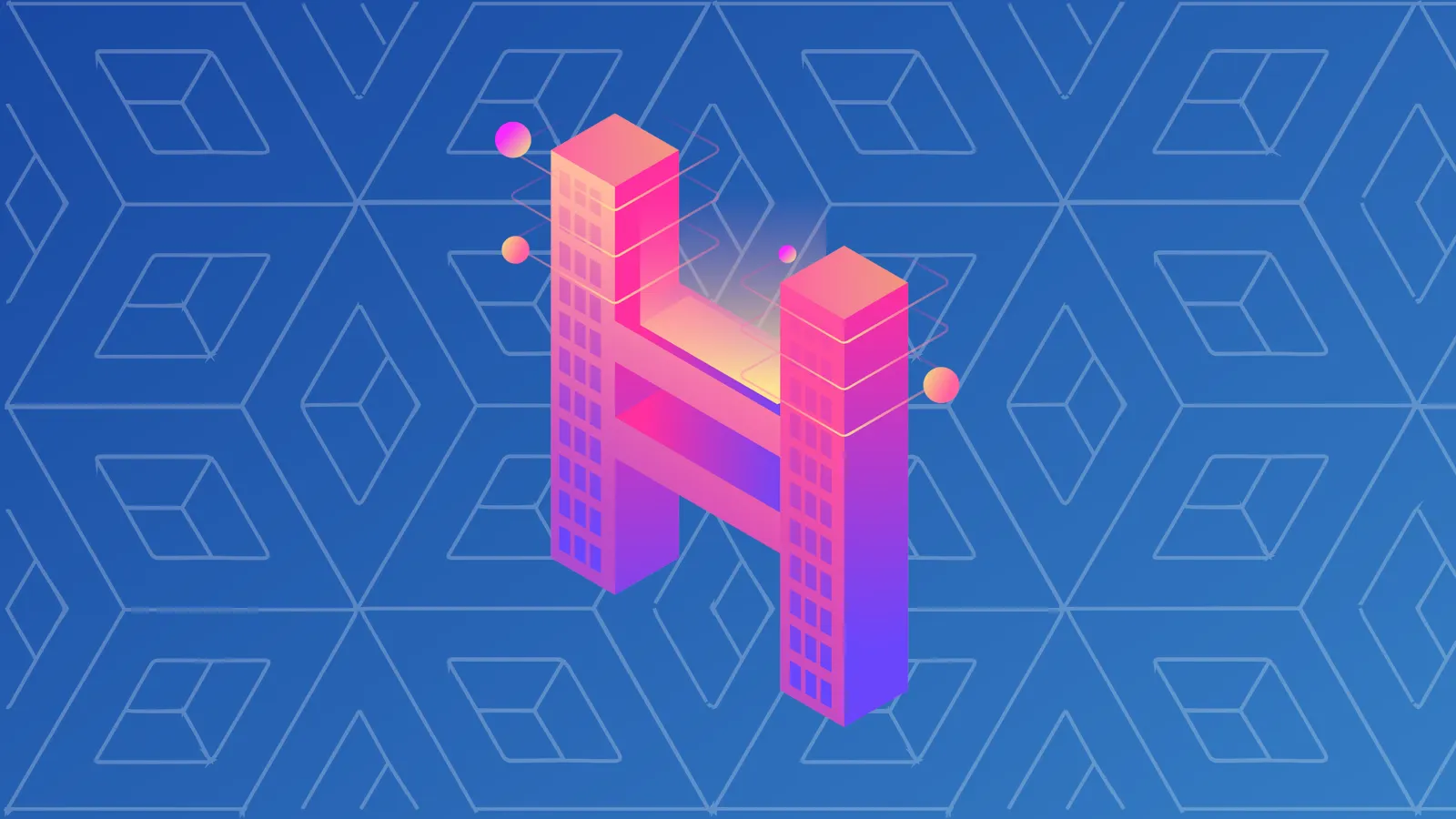In brief
- Hedera Hashgraph is a platform that presents itself as faster and more secure alternative to blockchain.
- It sidesteps energy-intensive mining by using a technology called Directed Acyclic Graph.
In most blockchain-based projects, the verification process relies on mining, an energy-intensive process requiring computers to work through fiendishly difficult computations to verify transactions. Can Hedera Hashgraph sidestep that problem by removing mining entirely and using an entirely new ledger structure? We find out below.
What is Hedera Hashgraph?
Hashgraph is not a blockchain in the sense that it’s built on a chain of blocks. It’s best to imagine it as a graph, whereby the speed of verifying transactions goes up as more transactions are added to the network. The name for the technology it’s based on is, in fact, known as a DAG , short for Directed Acyclic Graph.
This technology is designed to help Hedera Hashgraph achieve more than 100,000 transactions per second, making it a true competitor to Visa and other mass-market payment systems.
The Hedera network currently performs 6.5 million transactions per day with an average transaction time of 5 seconds—easily surpassing Ethereum's 1.2 million and Bitcoin's 300,000 transactions put together.
How does Hedera Hashgraph work?
A council of 19 multinational corporations from around the world govern the platform and the software that will run on millions of nodes globally. To reach consensus, instead of mining, nodes on the Hashgraph "gossip" with each other, comparing notes on the transaction history of the network.
As the nodes gossip, they select a few “famous witnesses.” Each witness is an event or a transaction and they become famous because they are communicated to the nodes early in the process. The chosen nodes then compare the gossip about these famous witnesses in the majority of nodes.
"So all we do is we just talk the way we talk anyway to send out our transactions, we add a tiny bit of information and it gives us this entire history. The history is called a Hashgraph."
The aim is to reach a point known as “strongly seeing” whereby two nodes could, with confidence, predict the decision—or outcome of a vote—by a third node, because they come to the same conclusion at multiple stages of the process.
In the future, Hedera hopes to make mainnet nodes permissionless, allowing more people to participate in the transaction verification process and protect the network against attacks.
Hedera’s Four Main Services
The Hedera Hashgraph network is comprised of four main components or services, which work together to allow transfers of value, the creation and execution of smart contracts, file transfers, and more. These are:
- HBAR: A cryptocurrency used for enabling low fee, highly customizable transactions on Hedera.
- Smart contracts: Used for automatically executing logic and building decentralized applications targeting numerous possible use-cases.
- File Service: For redundant, distributed file storage with granular controls, like append and deletion.
- Consensus Service: For attaining fast, fair, and secure consensus in any application that requires trust
How is Hedera Hashgraph different to blockchain?
The main difference between Hedera Hashgraph and some blockchain-based platforms is that it doesn’t require compute-heavy proof of work.
The Advantages of Hedera Hashgraph
Hedera Hashgraph claims to achieve the highest possible level of security, even when malicious actors are present on the network, through a system called aBFT (asynchronous byzantine fault tolerance) that is employed by the nodes.
Hedera Hashgraph is faster than the Bitcoin or Ethereum blockchains because transactions can be processed in parallel, not serially, and has fast latency—it takes only a few seconds for a transaction to be sent out and confirmed (with 100 percent certainty) by the network.
The Hedera Hashgraph platform supports the same object-orient programmed language that Ethereum uses, known as Solidity, which is commonly used for smart contracts. By enabling smart contracts, the platform can be used to build decentralized applications (dapps), which can be used for a variety of use-cases, including gaming, decentralized finance (DeFi) products, digital identity, and more.
It also benefits from extremely low fees and rapid transactions, with transactions reaching absolute finality in just seconds, and transaction fees of under 1 cent. Comparatively, Bitcoin transactions can take more than 10 minutes to confirm and have maintained an average transaction fee of more than $1 throughout much of 2020. In early 2021, fees shot up above $10, reaching as high as $30 per transaction.
The Disadvantages of Hedera Hashgraph
Unlike many cryptocurrencies, Hedera Hashgraph isn’t open source. Instead, the technology is patented, preventing developers from forking the protocol to create their own public versions—similar to how Bitcoin (BTC) was forked into Bitcoin Cash (BCH), and Bitcoin Cash was forked into Bitcoin SV (BSV).
Swirlds, the company behind the platform, argues that the algorithm is patented to prevent the loss of network effects, which sees the value of the hashgraph climb with a growing user base. Since forks can split communities and user bases, this can represent a risk to firms building on forkable chains—which Hedera has eliminated with its patents.
Beyond this, with just 19 governors, it’s questionable whether Hedera Hashgraph offers the decentralized solution that blockchain purists clamor for. However, since each governor is an industry-leading, highly reputable organization, it is unlikely that they would do anything that is not in the best interests of a network they have a considerable stake in seeing succeed.
Did you know?
Hedera Hashgraph’s co-founders Leemon Baird and Mance Harmon met while they were both in the US Airforce. They have now been working together for 25 years.
What are Hedera Hashgraphs’s aims?
In 2018, Hedera Hashgraph raised $120 million in its token sale. The money will be used to provide cryptocurrency as a service to support micropayments; to develop storage in the form of a distributed file service that apps can use, and to enable contracts—including smart contracts—on its platform.
Since launching its mainnet in 2019, Hedera Hashgraph has gone from strength to strength, and its claims of being able to support in excess of 10,000 transactions per second (tps) have so far been proven accurate for standard hbar token transfers. However, the network is currently throttled to 10 tps for transactions that invoke a smart contract. This is roughly on par with Ethereum and other smart-contract capable blockchains.
The company behind the platform has stated that the throttling will be gradually loosened over time. Until then, it remains unclear whether Hedera Hashgraph can be used to tackle the massive load that popular dapps on other networks have seen, which has, at times, crippled networks like Ethereum and EOS.
However, Hedera's achievements took a while to be reflected in its token price. HBAR launched with a price of $0.36, but quickly slumped to $0.03, less than a tenth of its original value, where it has for the most part remained throughout 2019 and 2020. This changed in 2021, however, as the price has rocketed up to a new all-time high of $0.42—in line with the general market rally.
Hedera Hashgraph's Partnerships
Since completing its ICO more than three years ago, Hedera Hashgraph has forged partnerships and working arrangements with numerous firms and institutions in a wide range of industries, including Boeing, LG, IBM, and University College London (UCL).
In February 2020, Hedera Hashgraph also onboarded Google to its governing council—arguably its biggest partnership yet. As part of the arrangement, Google will run a Hedera network node, and will help participate in governance of the network.
Recently, payments company eftpos, Standard Bank and energy giant EDF have joined its council.
Which companies are building on the platform?
- 📈 Virtual trading platform TrakInvest.
- 🚜 Agryo, a farming loan platform that's building a decentralized data-driven prediction model.
- 💰 Carbon, which has launched the first stablecoin on Hedera.
- 🏬 AdsDax — a fast and fair ad marketplace built on Hedera.
The future of Hedera Hashgraph
In February, Hedera launched the Hedera Token Service, enabling anyone to create tokens on the platform. Transferring tokens will cost just $0.001. There are already a number of projects building tokens on Hedera but this will be fleshed out in the months ahead.
Proud of the Hedera team today for lauching the @Hedera Token Service (HTS) live on mainnet. Our initial token ecosystem consists of 60+ wallets, exchanges, custodians, token issuers, council members, and more. https://t.co/1cEf54MDwt
— Leemon Baird (@leemonbaird) February 9, 2021
At the same time, there are a number of incoming upgrades to the Hedera Hashgraph mainnet expected over the coming months. According to its roadmap, there are plans to reduce the amount of downtime the network needs when maintenance is performed (unlike decentralized coins that run continuously even while being upgraded).
The network will also see the introduction of scheduled transactions. This is where someone specifies a future time that they want the transaction to occur. Alternatively, it can be when someone wants a transaction to be signed by a specific number of people before it's sent.
In the second half of 2021, there are more upgrades on the table. These include enabling multiple parties to make transactions as well as sharding, a way for the network to be split into multiple "shards" in order to increase the number of transactions it can process.
Say what you like about it, but Hedera certainly has ambitious plans.



